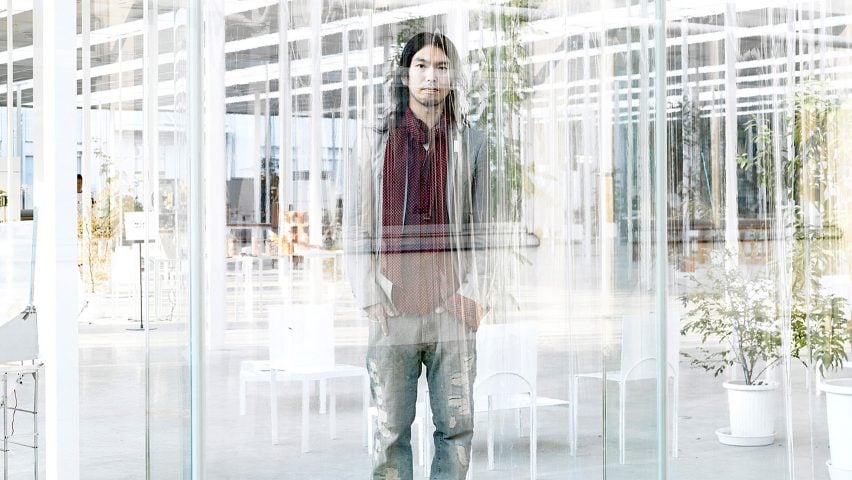Who is Junya Ishigami? Here's a look at seven significant projects by the Japanese architect, who has just been announced as designer of the Serpentine Pavilion 2019.
Born in 1974 in Japan's Kanagawa prefecture, Ishigami completed his master's degree in architecture and planning at the Tokyo National University of Fine Arts and Music in 2000.
The architect founded Junya Ishigami + Associates in 2006, after four years working at SANAA.
He started attracting international attention just a couple of years later – he became the youngest recipient of the Architectural Institute of Japan Prize for his glass-walled KAIT studio, and he won the Golden Lion for best project at the Venice Architecture Biennale in 2010.
Ishigami's design for the 19th Serpentine Pavilion features a huge slate roof rising up out of the landscape. It will likely be unveiled in June 2019.
Read on for details of Ishigami's most significant projects:
KAIT Workshop, Kanagawa Institute of Technology, Japan, 2008
Ishigami designed the Kanagawa Institute of Technology's KAIT Workshop to be flexible for both students and the public.
Visible behind its glass walls are more than 300 steel columns that differ in size, reminiscent of trees in a forest.
Find out more about KAIT Workshop ›
Japanese Pavilion, Venice Architecture Biennale, Italy, 2008
Four greenhouses surrounded by chairs and cabinetry spilled out from the Japanese Pavilion at the Venice Architectural Biennale in 2008.
Conceived by Ishigami as an "artificial environment", the project was designed without air-control systems and doors to make the boundary between nature and architecture indistinguishable.
House & Restaurant, Yamaguchi, Japan, 2013
Ishigami strayed from his signature thin, light and transparent buildings when creating this subterranean house and restaurant, which is informed by cosy wine cellars.
It was constructed by pouring concrete into holes in the ground, which acted as a textured mould. The surrounding earth was then excavated to reveal a labyrinth of cave-like spaces.
Ishigami inserted a series of cloud-shaped partitions into the former cafeteria of an old high-rise to create this daycare and child-support centre.
As its concrete structure and servicing were left exposed, the "clouds" were incorporated to create archways and pathways throughout the space to make it more playful for children.
Find out more about Cloud Garden ›
Park Groot Vijversburg Visitor Center, Netherlands, 2017
Junya Ishigami + Associates worked with Studio Maks to complete this visitor centre in the 19th-century Park Vijversburg.
The building comprises three intersecting glass corridors that sweep outwards from a sunken, triangular-shaped centre to provide views out across different parts of the landscape.
Find out more about Park Groot Vijversburg Visitor Center ›
Botanical Garden Art Biotop, Tochigi, Japan, 2018
This botanical water garden forms part of a health-focused resort at the foot of the Nasu mountains.
It consists of numerous biotopes, created using water drawn from a watercourse that was once used to irrigate rice paddy fields.
The House of Peace, Copenhagen, Denmark, proposed
Designed in collaboration with Svendborg Architects, this monumental cloud-like building is designed to offer a symbol of peace in Copenhagen's harbour.
The building was imagined as a huge cloud resting over an artificial island with a water-filled floor, allowing circular boats to move through the cavernous interior like lily pads.
Find out more about The House of Peace ›

